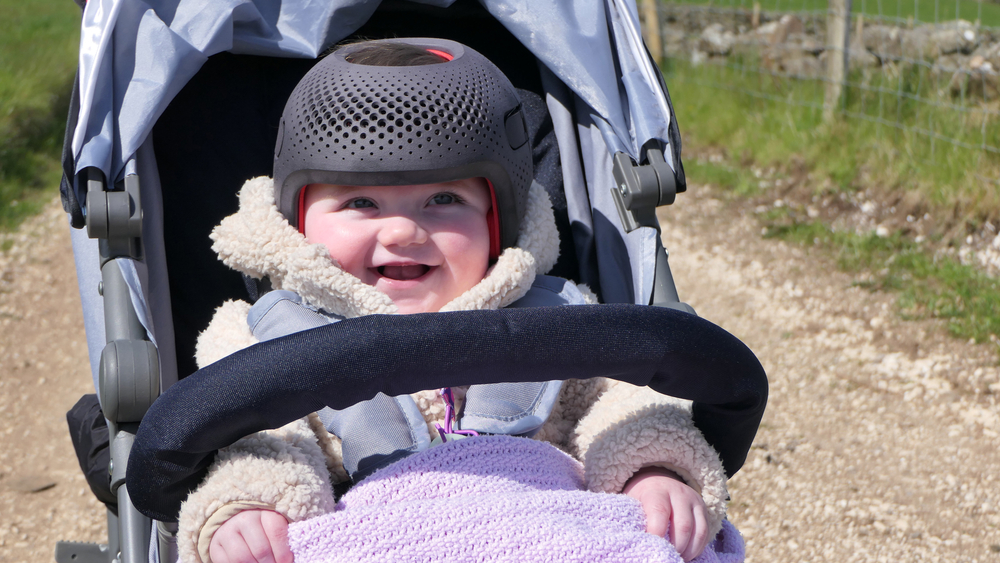In this blog from Let’s Grow Pediatrics, we go over the conditions of plagiocephaly and torticollis.
What Is Plagiocephaly?
Plagiocephaly is a condition that affects almost 1 in every 2 children, and is characterized by a flat spot on the head. This is usually caused by a baby spending too much time lying on their back or one side. Fortunately, this is treatable, as a newborn baby’s skull is soft and can reshape as it grows. To help prevent plagiocephaly, try alternating your child’s sleeping position, and make sure to give your baby supervised tummy time when they’re awake.
Signs Of Plagiocephaly
Plagiocephaly can occur when a child sleeps in the same position for too long. To help reduce the pressure on the flattened spot on their head, you can try putting a rolled towel or soft support under them to rotate them off their back at a 45-degree angle. If you have any questions or concerns about the safest way to do this, talk to your child’s doctor or physical therapist. Make sure not to use anything to restrict your child’s head movement, so they can still breathe freely.
When observing a baby’s head from above, you may notice an asymmetry in the shape of the head, with the cheekbone and ear on the flat side of the head appearing pushed forward. Additionally, there may be a lack of hair in one spot, which is another indication of plagiocephaly.
Torticollis: An Associated Condition
Torticollis is a common condition that often occurs with plagiocephaly. Almost 9 out of 10 babies who have been diagnosed with torticollis also have been diagnosed with plagiocephaly. In this condition, a tightness or overuse of a muscle in the infant’s neck causes the head to tilt or tip in a particular direction. This may be caused by the baby staying in the same position for a long period of time, such as when being fed, in a car seat or sleeping. It can also be due to the baby’s position while in the womb or during the birthing process.
If you have noticed that your child has difficulty turning their head comfortably, it is important to seek a diagnosis from a physical therapist. This could be a sign of torticollis or plagiocephaly, which can impact a child’s facial symmetry and ear alignment. Having torticollis could lead to delayed whole body awareness, muscle weakness, and difficulties with balance, as well as difficulties interacting with their environment.
How Can Physical Therapy Benefit A Child’s Development?
At Let’s Grow Pediatrics, we believe that it is important to catch any signs of developmental delays early. We recommend that if a child has a diagnosis with known associated delays, they should seek a physical therapy referral before any signs of delay become apparent. Our evaluations for developmental disabilities and plagiocephaly begin as early as one month of age.
How Can Physical Therapy Benefit A Child With Plagiocephaly?
Let’s Grow can offer several options for physical therapy to meet the development needs of your child. These include the Universal Exercise Unit, which utilizes a pulley and weight system to improve balance, muscle control, and motor skills. Dynamic Movement Intervention is also available, with repeated dynamic exercises to boost balance and function. Intensive Physical Therapy is a week-long session focused on posture, movement, and regaining lost milestones. Finally, Muscle and Joint Strengthening can be used to help those with severe injuries regain range of motion and control.
If you wonder if your child has plagiocephaly or torticollis, call Let’s Grow Pediatrics for a diagnosis and physical therapy care plan. To find out more about our treatment options and how your child can benefit from Pediatric Intensive Physical Therapy, reach out to Let’s Grow Pediatrics in Edmond, OK. Call 405-562-3485 to schedule your consultation today.


